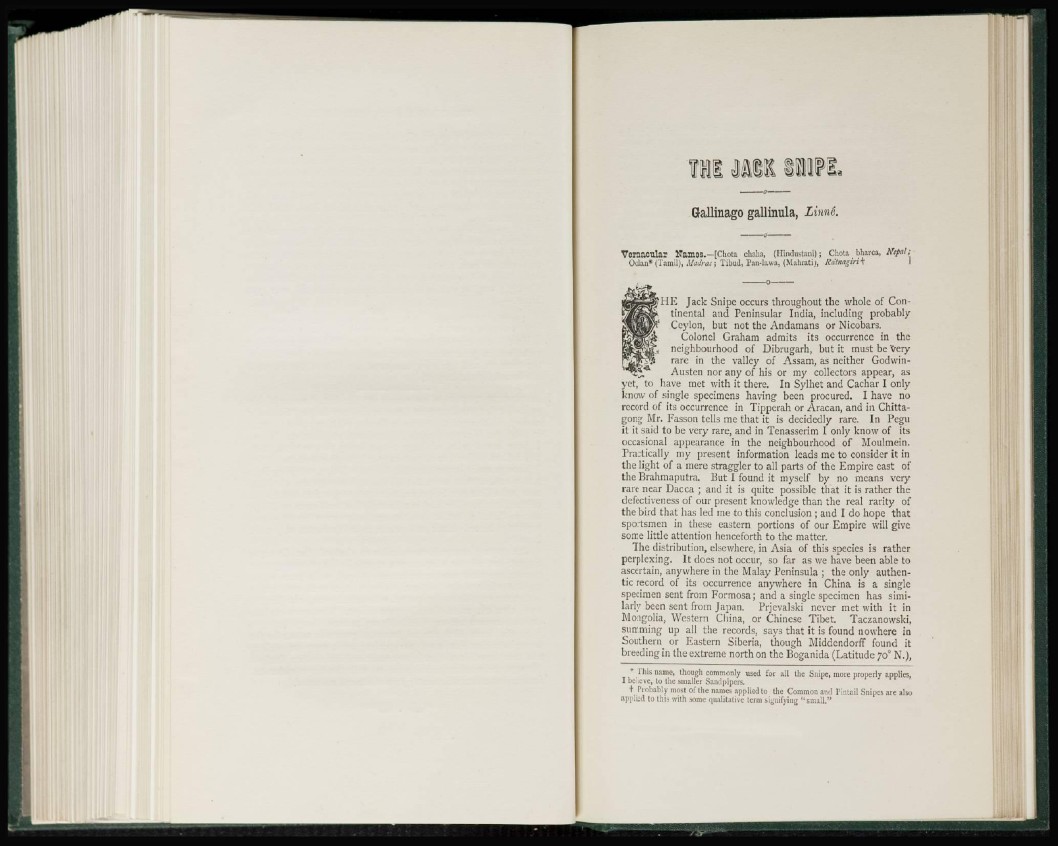
f i l MGR WWL
Gallinago gallínula, Linné.
Vernacular Hamos.—[Chota chala, (Hindustani) ; Chota bharca, Nepal ;
Oolan* (Tamil), Madras; Tibud, Pan-lawa, (Mahrati), Kalnagiri't J
^ ^ 5 H E Jack Snipe occurs throughout the whole of Continental
and Peninsular India, including probably
SwIIjPf Ceylon, but not the Andaman* or Nicobars.
KS5§!E5« Colonel Graham admits its occurrence in the
gJiaSSfc neighbourhood of Dibrugarh, but it must be Very
n£|Jv?# rare in the valley of Assam, as neither Godwin-
' ^8:* Austen nor any of his or my collectors appear, as
yet, to have met with it there. In Sylhet and Cachar I only
know of single specimens having been procured. I have no
record of its occurrence in Tippcrah or Aracan, and in Chittagong
Mr. Fasson tells me that it is decidedly rare. In Pegu
it it said to be very rare, and in Tenasscrim I only know of its
occasional appearance in the neighbourhood of Moulmein.
Practically my present information leads me to consider it in
the light of a mere straggler to all parts of the Empire cast of
the Brahmaputra. But I found it myself by no means very
rare near Dacca ; and it is quite possible that it is rather the
defectiveness of our present knowledge than the real rarity of
the bird that has led me to this conclusion ; and I do hope that
sportsmen in these eastern portions of our Empire will give
some little attention henceforth to the matter.
The distribution, elsewhere, in Asia of this species is rather
perplexing. It does not occur, so far as we have been able to
ascertain, anywhere in the Malay Peninsula ; the only authentic
record of its occurrence anywhere in China is a single
specimen sent from Formosa; and a single specimen has similarly
been sent from Japan. Prjevalski never met with it in
Mongolia, Western China, or Chinese Tibet. Taczanowski,
summing up all the records, says that it is found nowhere in
Southern or Eastern Siberia, though Middendorff found it
breeding in the extreme north on the Boganida (Latitude 7 0 ° N.),
* This name, though commonly used for all the Snipe, more pro|>erly applies,
T believe, to the smaller Sandpipers.
t Probably most of the names applied to the Common and Pintail Snipes are also
applied to this with aome qualitative term signifying '• small."